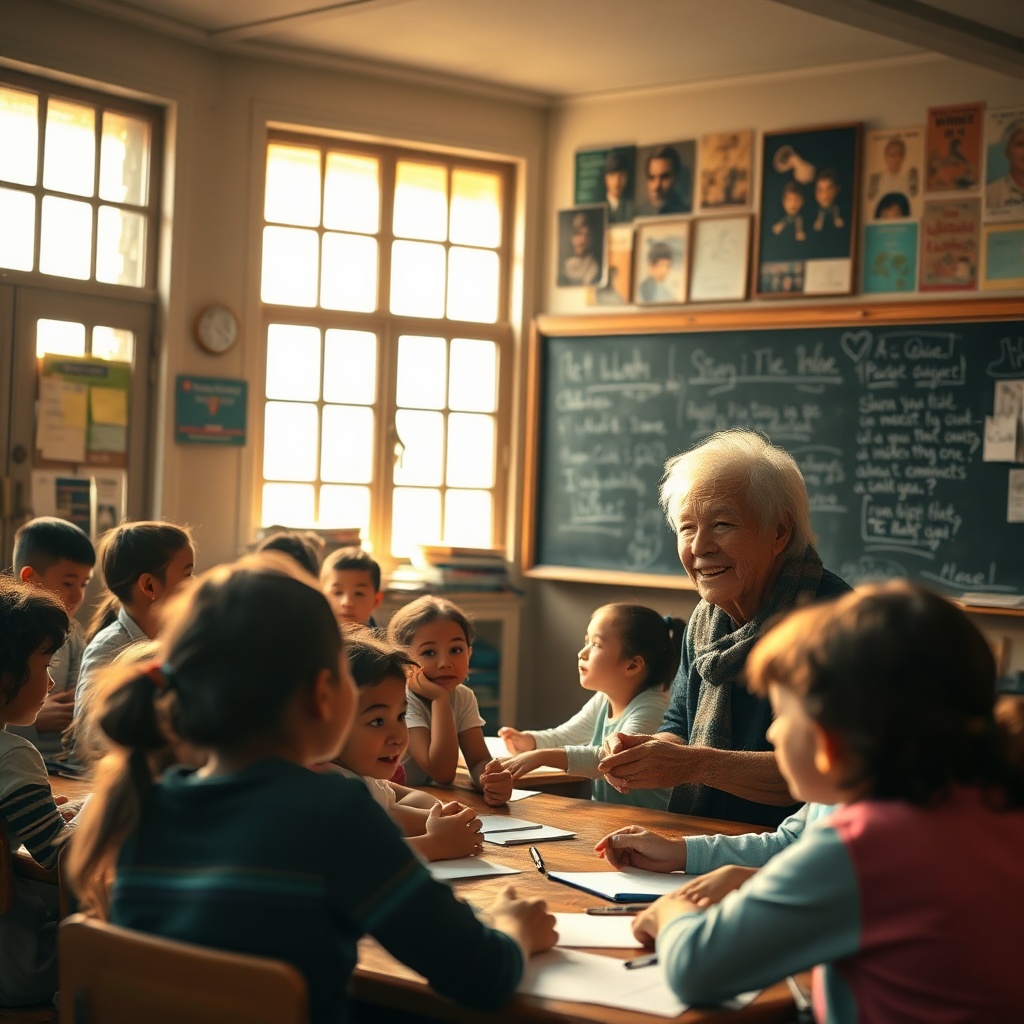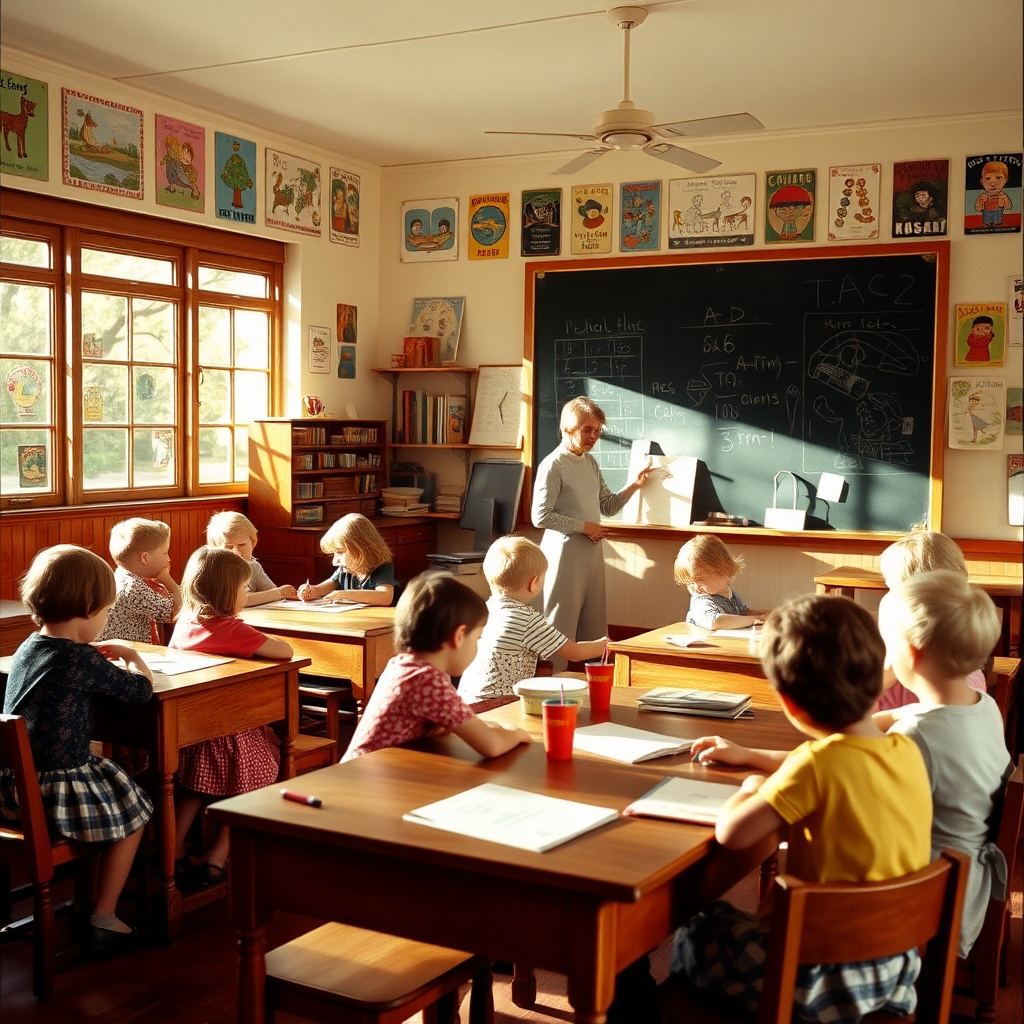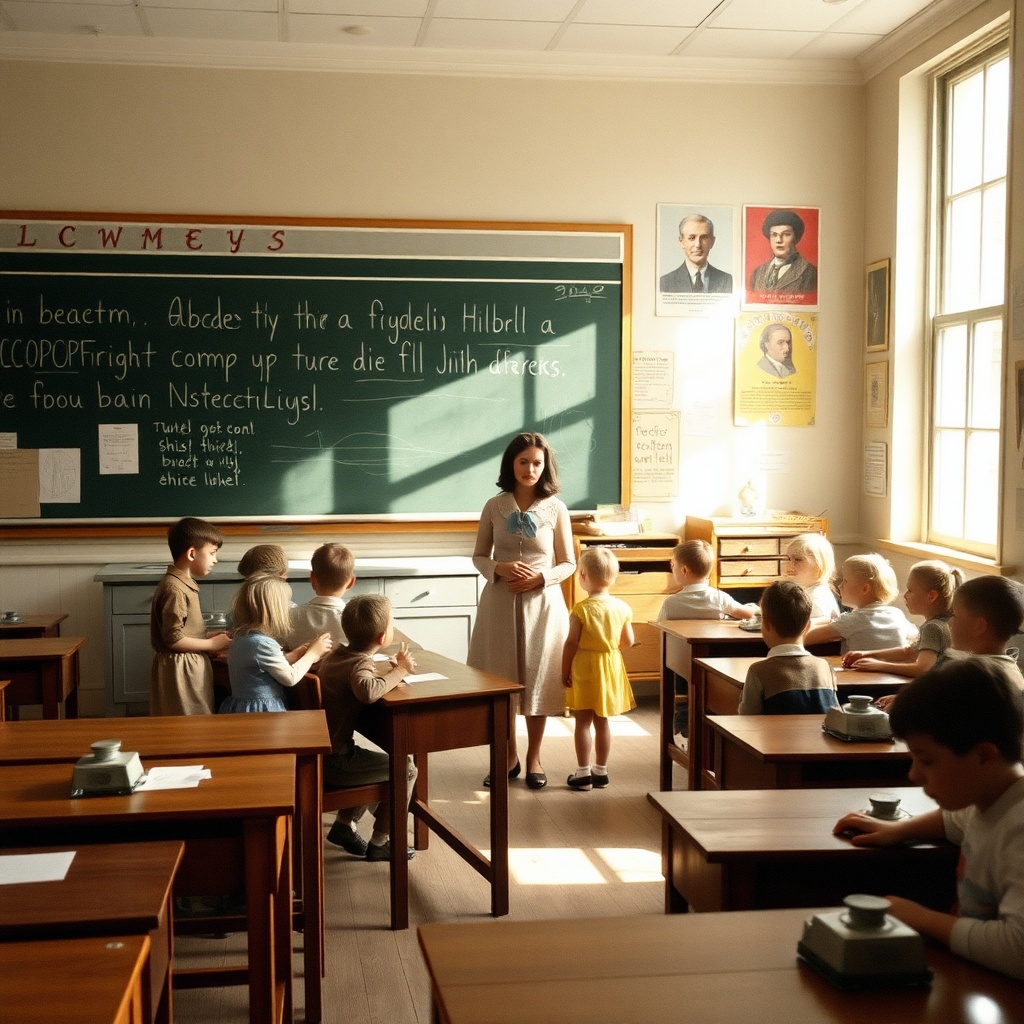Reliving the Past: Iconic Lessons That Shaped a Generation

As we take a stroll down memory lane, let’s explore the classroom experiences that defined an era. The 1960s was a pivotal decade in education, marked by revolutionary ideas and unforgettable lessons. Each subject brought unique insights that shaped the worldview of a generation.
History: The Power of Change
The lessons in history during this decade were not just about dates and events; they were about understanding the forces that shaped society. Key events like the Civil Rights Movement and the Vietnam War were integral to discussions in classrooms across America.
- Lesson Focus: The importance of social justice and activism.
- Impact: Students learned to question authority and advocate for change.
Literature: Voices of a Generation
Literature classes in the 1960s introduced students to powerful voices. Authors such as Harper Lee and Jack Kerouac provided profound insights into the human experience.
- Key Texts:
- To Kill a Mockingbird
- On the Road
- Lesson Focus: Empathy, freedom, and the search for identity.
- Impact: Encouraged students to think critically about morality and society.
Science: Exploration and Innovation
The scientific advancements of the 1960s captivated young minds. From learning about space exploration to understanding the human body, science classes were filled with wonder.
- Key Events:
- The launch of Sputnik
- The Apollo 11 moon landing
- Lesson Focus: Curiosity and the quest for knowledge.
- Impact: Inspired many to pursue careers in science and technology.
Art and Music: The Language of Expression
Art and music classes fostered creativity and self-expression. The counterculture movement influenced students and led to vibrant discussions about culture and identity.
- Key Influences:
- The Beatles
- Abstract Expressionism
- Lesson Focus: Individuality and cultural impact.
- Impact: Created a generation that valued artistic expression.
Mathematics: The Logic of Life
Mathematics lessons were about more than numbers; they were about problem-solving and logical reasoning.
- Lesson Focus: The application of math in real-world scenarios.
- Impact: Prepared students for future careers in an increasingly technical world.
As we reminisce about the iconic lessons of the 1960s, it’s clear that these subjects did not just inform; they transformed. The education of this era instilled values of critical thinking, creativity, and social responsibility. What lessons do you remember from your own classroom experiences? Share your memories and let’s keep the echoes of the past alive.
Voices from the Chalkboard: Memories of Teachers Who Inspired

Remembering the Dedication
As we reflect on the 1960s education, let us dive into the stories of remarkable teachers who shaped lives with their passion and commitment. Close your eyes and think back to your school days. Who was the teacher that made a difference? Was it the one who stayed late to help you understand math, or perhaps the one who ignited your love for literature?
The Unforgettable Classroom Moments
Imagine a classroom filled with the smell of chalk dust and the sound of pencil scribbles. Teachers during this era were more than educators; they were mentors, guiding their students through both academic and personal challenges. Let’s revisit some of the cherished memories shared by those who walked the halls of learning in the 1960s.
Stories from the Chalkboard
- Mrs. Johnson – The Nurturer
- Known for her warm smile and patience, Mrs. Johnson taught English and was famous for her creative writing assignments that encouraged students to express themselves freely.
- “She would often say, ‘Your words have the power to change the world,’ and those words stuck with me,” reminisces a former student.
- Mr. Thompson – The Innovator
- A science teacher whose experiments were the highlight of the week. He believed in hands-on learning and often took students outside for practical lessons.
- “His enthusiasm made science come alive. I still remember the time we launched a homemade rocket!” recalls another.
- Miss Roberts – The Visionary
- A history teacher who made the past feel real through stories and discussions. She encouraged her students to question and think critically.
- “She inspired me to see history not just as dates and events, but as a series of human experiences,” shares a devoted pupil.
Interactive Reflection
Now, it’s your turn to share your own memories. Take a moment and think:
- What was your favorite subject?
- Can you recall a lesson that changed your perspective?
- How did your teachers influence your life choices?
Feel free to write down your thoughts or share them with friends and family. These memories are precious and deserve to be celebrated!
Conclusion: The Legacy of Educators
The teachers of the 1960s left an indelible mark on their students, fostering a love for learning that transcended generations. Their voices echo in the hearts of those they inspired, reminding us of the profound impact that education can have. Let us honor their legacy by sharing our stories and keeping the memories alive.
Classroom Innovations: How the 1960s Redefined Learning Spaces

Introduction to Classroom Innovations
The 1960s was a decade of change. It was a time when traditional education systems began to evolve, paving the way for innovative learning environments. Do you remember the days when classrooms were filled with rows of desks and a teacher at the front? Let’s explore how these spaces were transformed during this vibrant era.
Flexible Learning Environments
One of the most significant innovations of the 1960s was the shift towards flexible learning environments. This meant that:
- Desks were rearranged: Instead of rigid rows, desks began to be grouped in circles or clusters, encouraging interaction among students.
- Open classrooms: Many schools experimented with open spaces where barriers between classrooms were removed, fostering collaboration.
Technology in the Classroom
Technology started to make its way into classrooms, changing the way lessons were delivered:
- Film projectors: These devices brought visual learning to life, allowing students to engage with content in a new way.
- Television: Schools began to use TV broadcasts for educational programs, exposing students to a wider world.
Student-Centered Learning
Perhaps the most profound change was the focus on student-centered learning:
- Personalized education: Educators began to recognize the importance of catering to individual learning styles.
- Project-based learning: Instead of rote memorization, students worked on projects that encouraged critical thinking and creativity.
Impact of Educational Theories
The influence of educational theorists also shaped classroom innovations:
| Theorist | Key Ideas |
|---|---|
| John Dewey | Emphasized experiential learning and the importance of community. |
| Jean Piaget | Focused on developmental stages and how children learn through play. |
| Lev Vygotsky | Introduced the concept of social learning and the ‘Zone of Proximal Development.’ |
Conclusion: Reflections on a Transformative Era
The innovations of the 1960s not only redefined learning spaces but also transformed the way students engaged with knowledge. How do these changes resonate with your experiences in education? Reflecting on this dynamic decade, we see the foundations of many modern educational practices that continue to evolve today.
The Ripple Effect: How 1960s Education Influenced Modern Teaching
The Ripple Effect of Educational Reform
The 1960s were a pivotal decade in the realm of education, marked by profound changes that shaped the way knowledge was imparted and absorbed. This period saw a shift from traditional teaching methods to more innovative approaches. Let’s explore how these changes continue to resonate in today’s classrooms.
1. Emphasis on Critical Thinking
Gone were the days of rote memorization. The educational reforms of the 1960s promoted critical thinking as a central goal of education. Educators began to encourage students to question, analyze, and engage with material on a deeper level.
- Modern Teaching: Today, classrooms often employ project-based learning and inquiry-based methods that foster critical analysis, encouraging students to think independently.
2. The Rise of Student-Centered Learning
The idea that students should be active participants in their own learning gained traction during the 1960s. This shift from teacher-centered to student-centered education has profoundly impacted contemporary teaching methods.
- Modern Teaching: This influence is evident in techniques such as collaborative group work and personalized learning plans that cater to the diverse needs of students.
3. Inclusion and Diversity in Education
The civil rights movements of the 1960s brought attention to the need for inclusive education. Schools began to recognize the importance of accommodating diverse backgrounds and learning styles.
- Modern Teaching: Today’s classrooms are more inclusive, often implementing differentiated instruction and culturally relevant pedagogy to support all learners.
4. Technological Integration
While the 1960s may seem distant from the digital age, the groundwork for integrating technology into education was laid during this period. Early computer-assisted instruction began to emerge, foreshadowing the tech-driven classrooms of today.
- Modern Teaching: Today, technology is a cornerstone of education, with tools like interactive whiteboards, online resources, and educational apps that enhance the learning experience.
5. Lifelong Learning
The 1960s emphasized the importance of education beyond the classroom, promoting the idea of lifelong learning. This concept encouraged individuals to pursue knowledge continuously throughout their lives.
- Modern Teaching: Today, lifelong learning is a fundamental principle, with many educational institutions offering adult education programs and online courses to accommodate various learners.
The ripple effect of the educational changes of the 1960s is evident in the practices we see in modern classrooms. By reflecting on this transformative decade, we can appreciate how far we’ve come and continue to strive for an inclusive, engaging, and effective educational environment.
Cultural Shifts: The Impact of Social Movements on School Life
The 1960s was a decade marked by profound change, with social movements reshaping not just societies but also the very fabric of school life across the United States. From civil rights to women’s liberation, these movements breathed new life into classrooms, challenging traditional norms and fostering a dynamic environment.
Engagement with Civil Rights
The Civil Rights Movement was a catalyst for change within educational institutions. Schools began to reflect the struggles and triumphs of the movement, creating a more inclusive environment. Can you recall any specific instances when you witnessed changes in your school? Perhaps the introduction of programs that celebrated diversity or the presence of cultural figures as guest speakers?
Students Taking a Stand
In this era, students became increasingly vocal about their rights and the issues affecting their communities. The Student Nonviolent Coordinating Committee (SNCC) and other organizations empowered youth to speak out. Did you participate in any student-led initiatives? What was it like to stand up for your beliefs alongside your peers?
Women’s Liberation Movement
The Women’s Liberation Movement also found its way into classrooms, encouraging discussions about gender equality. Schools began to address issues of sexism and discrimination more openly. Reflect on your experiences: did you notice any subjects or topics that were previously taboo becoming part of the curriculum?
Curriculum Changes
As a result of these movements, educational curricula began to evolve. Schools started to include multicultural education and courses on social justice, preparing students to engage with an increasingly complex world. What were some of the most impactful lessons you remember? How did they shape your views as a young adult?
The Role of Music and Art
The 1960s also saw the rise of music and art as forms of protest and expression. From folk music to the psychedelic art movement, these cultural shifts influenced students’ creativity and self-expression. Did you ever create art or music that was inspired by the social changes happening around you? How did it feel to express your thoughts and feelings through creative outlets?
A Lasting Legacy
The cultural shifts of the 1960s left an indelible mark on education, fostering a sense of activism and community among students. As we reflect on this transformative decade, it’s essential to consider how those experiences shaped our understanding of equality, justice, and the importance of being an engaged citizen. What lessons from your school years do you still carry with you today? How have they influenced your perspective on contemporary issues?
